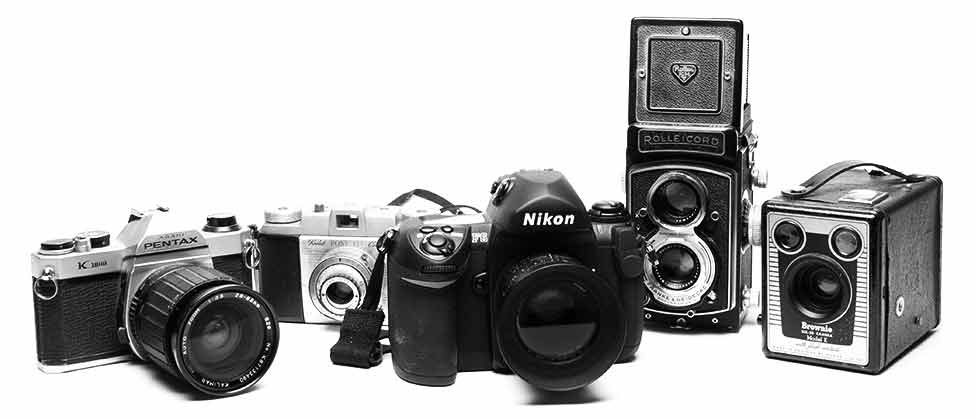
Camera
What camera you use has a great deal to do with what an image will look like. Different types, as well as different formats have both advantages and disadvantages. Pretty much any type or format is capable of making great photographs, but knowing the limitations and possibilities of each goes a long way towards making the image you want.
Starting with the idea that all cameras share a basic kind of mechanical design—they are a light-tight box with an opening—looking at what the different types and formats can and cannot do is well worth the effort. This section attempts to give an overview of the different types and formats of cameras, as well as a look at controls.
As stated above, a camera is, at its most essential, a light-tight box with a hole in it. That being said, cameras have evolved over the years. This section deals with the mechanics of a camera (its basic parts), controls, types of cameras, lenses and light meters. In other words, this is the hardware section.
The anatomy and controls sections are slanted towards the 35mm SLR, but are generally adaptable to any type. Much like automobiles, cameras can be simple or complicated, but in general have most of the same functions, and thus similar controls. Types of cameras are discussed in terms of their form (how they work), as well as their format, or what size film they use. Categories of camera design may be found using different formats. Likewise, lenses and light meters will be discussed in terms of their general type and application, rather than specific models.